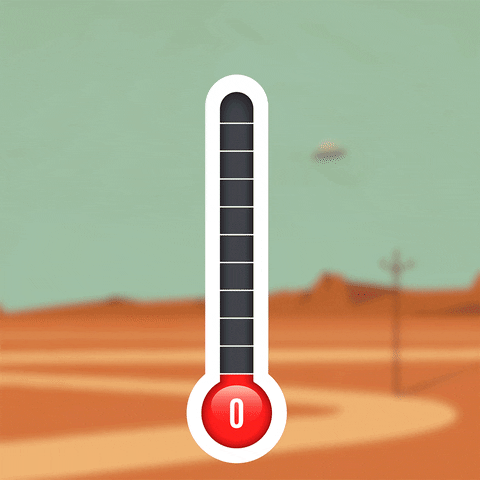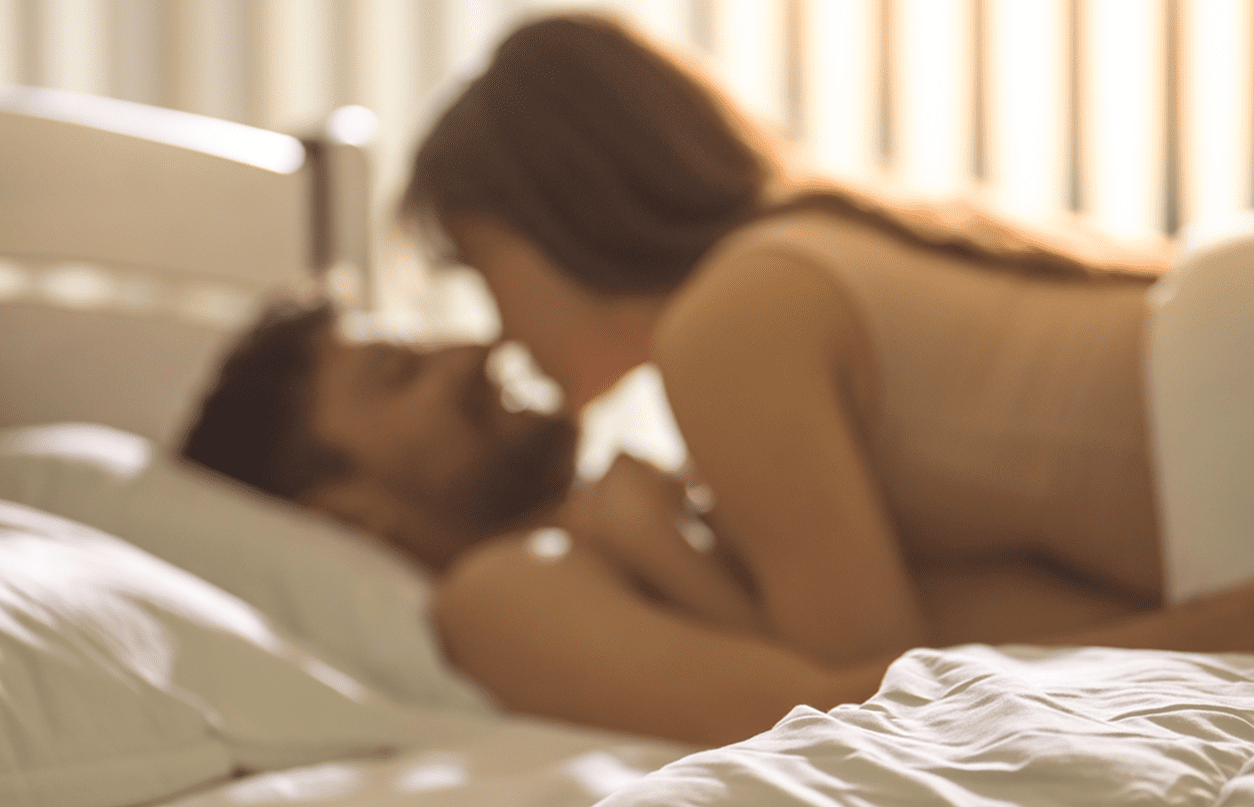
Published on Jul 10, 2023
Last modified on Jul 12, 2024
Is It Just Me, Or Do Hot Flashes Get Worse During Summer?
5 min read

Hot flashes (or night sweats, if they happen at night) are one of the most common symptoms of perimenopause. Every woman will experience them differently — the frequency, intensity, and overall duration can vary widely.
They manifest as episodes of perceived heat and/or sweating that typically last less than two minutes and — you guessed it — cause a sudden feeling of warmth spreading through the upper body and face, a flushed appearance, red or blotchy skin, rapid heart rate, perspiration, and, ironically, also chills. Needless to say, this symptom impacts quality of life BIG TIME.
Although the causes aren’t yet fully understood, evidence points to hormonal changes. When estrogen levels drop, the hypothalamus (which acts as our body’s thermostat) becomes more sensitive to slight changes in body temperature. Thinking it’s overheated, the hypothalamus starts working to cool the body by shunting blood away from the core to your skin, which kick-starts a chain of events that causes flushing, sweating, and an internal sensation of heat despite the fact that our body temperature isn’t actually rising.
But you know what does rise during summertime? The temperature…which may have you wondering…if my body temperature is higher because of the summer heat, should I expect my hot flashes and/or night sweats to worsen? 🥵🌡️
The answer? Possibly…but it’s not an inevitability. Here’s why:
Are hot flashes worse in hot weather?
For some women, heat — either from being outside or from getting overheated after physical activity — can trigger hot flashes. And there’s research to back this up.
According to a national survey conducted in the United States, some women experience more or worsening hot flashes in the summer. This is echoed by research showing seasonal variations associated with the summer solstice (increases in symptom reporting) and winter solstice (decreases in symptom reporting), with increases in night sweats preceding increases in hot flashes.
However, this is not definitive; in the national survey, there were some women who reported consistent symptoms throughout the year.
It’s HOT out and I’m struggling…what can I do?
🍴☕🍷 Lifestyle changes
Nutrition & Diet
Add a serving of soy to your diet
Soy products such as tofu contain isoflavone compounds (genistein & daidzein) that can help manage hot flashes. It works by essentially mimicking natural estrogen. Studies have shown benefits with isoflavone supplements, and one small study suggests that dietary soy might also help too. As soy is a great source of plant protein, it might be worth a try adding soy to your diet to see if it helps.
And no, 1-2 servings of whole soy (edamame, soy milk, tofu, miso) do not increase breast cancer risk and are likely safe even for women who have had breast cancer (one serving = 1 cup of soy milk, 1/2 cup of edamame or tofu). Whole soy, however, may not be optimal for women with autoimmune conditions, but soy isoflavones can still be used. We recommend choosing organic soy whenever possible, as conventionally produced soy often comes from large farms with high pesticide and chemical use. Bonus points if the soy product is fermented (think tofu, miso, or tempeh).
READ MORE: Is Soy Safe & Effective For Menopausal Women? Here’s What The Science Says.
Toss ground flaxseed into your smoothies or oatmeal
Like soy, ground flaxseed contains phytoestrogens and may help reduce hot flashes. The research shows conflicted results. But like dietary soy, there are other health benefits. Ground flaxseed is a great source of fiber and omega 3s. Add 1-2 tablespoons to smoothies, oatmeal, yogurt — and be sure it’s ground! Consuming it in the whole seed or oil form does not deliver the same benefits.
Avoid spicy foods!
Exercise caution when it comes to late-night dinners that bring the heat! They can also, well, bring YOU the heat and cause full-body flushing.
Try to cut back a bit on alcohol (or switch the type)
While any alcohol can be a hot flash trigger, red wine is known to be particularly problematic. If you do choose to drink, try switching to white wine or a different beverage and enjoy your drink with food, earlier in the evening, and not right before bed. Or try a zero proof cocktail made from a Seedlip non-alcoholic spirit (watch Elektra’s take on mocktails here).
Be careful with caffeine
While the correlation between coffee and sleep is widely known, the effect your cup ‘o Jo has on hot flashes can be just as bothersome and a trigger for many. We recommend sticking with decaf when possible if caffeine is your trigger.
😴🧘♀️ Behavioral & holistic practices
Keep your bedroom cool
When it comes to night sweats, it’s important to keep your bedroom cool. Right around bedtime, our body temperature drops 1-2 degrees, which signals to our internal clock that it’s time to hit the hay. In doctor-speak, this is what’s called “thermoregulation.” We recommend keeping your thermostat a cool 60 – 67°F and, if air conditioning isn’t enough, trying the following (although there’s no clinical evidence in support of these techniques, anecdotal evidence is promising):
- Cooling sheets made with breathable fabrics like bamboo, which effectively wicks moisture (read: sweat) from your skin
- Cooling mattress pad or blanket, or a heated blanket for your bed partner (look into one with dual controls to accommodate your partner)
- Cooling system for your bed that uses circulating water to maintain a consistent, cool temperature (e.g., this hydro-powered one from ChiliSleep)
- A fan! Simple, low-cost, and effective
Put a cold compress over your forehead before bed
Simply wet a washcloth with cold water, then press it against your forehead or other pulse points (ankles, wrists, elbow creases, back of knees). You can also use an ice pack, but if you do make sure to wrap it in a paper towel or washcloth first so it doesn’t have direct contact with your skin.
Try paced deep breathing exercises
The North American Menopause Society recommends paced respiration (slow deep breathing sustained for a specific period of time) as a behavioral treatment for hot flashes. To start, try for five minutes twice per day, with a target rate of 6-8 breaths per minute. If that works, try to get up to 15-minute sessions. It might feel a bit odd and unnatural at first, but stick with it, and it will become like second nature.
Give acupuncture a go
Acupuncture is when extremely thin needles are inserted into the skin at strategic points (don’t worry — it doesn’t hurt!) and acupressure is when gentle pressure is used to stimulate certain points on your body. Both techniques have been studied in reducing hot flash severity and decreasing frequency (in addition to promoting sleep and reducing anxiety), and there have been mixed results. A 2016 study, which compared an acupuncture group with a control group, found that hot flash frequency declined by 36% over six months with the acupuncture group, while frequency increased by 6% in the control group.
So while some studies haven’t showed benefit, acupuncture is worth trying, especially if behavioral approaches aren’t working or you’re not a candidate for hormonal or other pharmacologic treatment.
💊 Supplements & over-the-counter solutions
Soy Isoflavones
Soy isoflavones are phytoestrogens that work like estrogen would in the body. Derived from soybeans, this supplement has been shown in most research to help control hot flashes, although it may take several weeks to experience full results.
Vitamin B6
B6, which is one of eight B vitamins, has been shown to boost serotonin levels and, as a result, help minimize hot flashes. However, like with all things that may be helpful, remember that too much of a good thing is well… too much of a good thing. Excessive levels of vitamin B6 may actually cause nerve damage and adults should stay well below the level of 100 mg of B6 per day from all sources. We recommend no more than 50 mg of vitamin B6 daily in a supplemental form to avoid this risk.
Swedish Flower Pollen
Swedish flower pollen is an extract made from the pollen and pistils of a certain family of grasses. It helps hot flashes by acting directly on the temperature control area in the brain. This is not a phytoestrogen, and therefore frequently used by women with hormone-positive breast cancer. We like Relizen by Bonafide.
READ MORE: Elektra’s Full Guide To Supplements
♀️ Hormone therapy
Low-dose contraceptives
Some healthcare providers advise perimenopausal women to take low-dose birth control pills as a way to regulate hormones that impact our cycles, decrease risk of ovarian/uterine cancer, bone loss, and hot flashes. Compared to typical birth control pills, which contain 20-50 micrograms of estrogen, estrogen prescribed to women for menopause most often contain 10-20 micrograms.
Hormone replacement therapy (HRT)
The treatment option with the highest reported rate of efficacy for hot flashes is estrogen-based hormone therapy, which comes in the form of a skin patch, gel, cream, spray, or pill. It’s proven effective and, as an added bonus, also helps with other symptoms of menopause like vaginal dryness and pain with sex. Estrogen-only therapy is generally for those who’ve had a hysterectomy. For those of us with a uterus, estrogen treatment is combined with another main female hormone, progesterone. HRT is safe for most women, however for some, it can increased risks of breast cancer, liver disease, and stroke. Therefore, HRT always requires an individualized approach. To learn more, refer to our full guide to hormone replacement therapy (HRT).
Tissue selective estrogen complex
Tissue selective estrogen complex involves a combination of selective estrogen receptor modulators (SERMs) and estrogen, which is most often recommended to postmenopausal women for the joint purpose of vasomotor symptom treatment and osteoporosis prevention. One common brand you may have heard is Duavee (it’s generic name is a mouthful: conjugated estrogens/bazedoxifene).
💊 Non-hormonal treatments
Unable to consider hormonal therapies for menopausal hot flashes, or just not interested? Don’t worry, you won’t be left stranded on a hot flash island (no pun intended). There are 100% still options for you, including these non-hormonal prescription medications, which have been shown to be safe and effective in reducing the severity and frequency of hot flashes.
Fezolinetant (Veozah)
FDA-approved in May 2023, fezolinetant is the newest medication in our hot flashes arsenal. This novel drug, a neurokinin 3 (NK3) receptor agonist, blocks a brain chemical called neurokinin B (NKB) that regulates the body’s temperature. Before menopause, the body maintains a healthy balance between estrogen and NKB. But when estrogen levels drop during menopause, NKB levels become relatively high, which can trigger hot flashes and night sweats. By blocking NK3 receptors, the balance is restored.
In clinical trials, it reduced the frequency of moderate – severe hot flashes by about 60%, in addition to reducing the severity.
SSRIs/SNRIs
SSRIs are selective serotonin reuptake inhibitors and SNRIs are serotonin and norepinephrine reuptake inhibitors — total tongue-twisters! These neurotransmitters are typically used as antidepressants; however, they’re also effective in treating certain menopausal symptoms such as hot flashes. They work by regulating serotonin (the “happy hormone” that controls mood) and norepinephrine (plays a key role in the body’s “fight-or-flight” response to stress). Some examples include escitalopram (Lexapro), sertraline (Zoloft), and venlafaxine (Effexor).
Gabapentin
Gabapentin (Neurontin) is an anti-seizure medication also used to treat menopausal symptoms (e.g., vasomotor symptoms and sleep disruptions).
Oxybutynin
Oxybutynin (Ditropan), a medication commonly used for urinary incontinence, has also been shown to be effective for hot flash treatment.
READ MORE:



